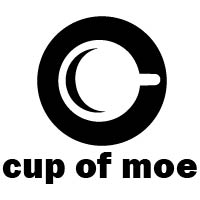We may earn money or products from the companies mentioned in this post.
Once upon a time, our ancestors held grandiose visions of the future. Simply refer to “2001: A Space Odyssey” for the epitome of ill-fated predictions. While Stanley Kubrick’s trippy classic is an unquestionable sci-fi masterpiece, it wasn’t a proper prediction of the year 2001. How disappointed Kubrick would have been, though Outkast’s prowess in the early 2000s probably could have rectified his shattered dreams. Luc Besson’s 1997 flick “The Fifth Element” debases the idyllic ‘30s and ‘40s forward-thinking vision. Following in a similar vein to “2001” Besson’s comedic tale opts for an oddball approach. The brilliant movie offers lavish visuals, a deep acting roster, and a surprisingly grounded setting which coalesce to form a tour de force worthy of multiple viewings.
“The Fifth Element” begins in 1914 Egypt, with an alien race appearing to protect a weapon proficient in conquering the Great Evil. A rather unconventional weapon, it contains a set of four stones and a sarcophagus, collectively five elements. Four stones symbolize the classical elements: earth, air, fire, and water, leaving the fifth, a perfect human. The aliens leave, charging the temple priest (John Bennett) with passing down knowledge of the five elements and their Divine Light.
Flash forward three hundred years, and sure enough, the Great Evil has returned, a menacing orange and black fireball. President Lindberg (Tommy Lister) consults his military advisors along with priest Vito Cornelius (Ian Holm). Cornelius explains that the Great Evil can only be defeated by the five elements. As the alien ship returns to earth with the elements, they are attacked by mercenary Mangalores, contracted by Jean-Baptiste Emanuel Zorg (Gary Oldman). A corporate owner with a Southern accent, Zorg is actually tasked with retrieving the stones by the Great Evil. Attempting to recover their benevolent alien helpers, scientists instead resurrect the fifth element, a perfect being known as Leeloo (Milla Jovovich). She flees the lab and crashes through the cab of former military specialist Korben Dallas (Bruce Willis). The pair scrambles to retrieve the four stone elements before the Great Evil demolishes earth.
Though the overall story arc may appear standard science fiction fare, the details and presentation differentiate “The Fifth Element” from its kin. Besson actually lampoons the genre through similar settings, but a relatively unchanged society. Flying cars, statuesque art deco-inspired buildings, and futuristic technology mask a still bumbling humanity. Cabbie Korben Dallas arises in South Brooklyn, grabs a cigarette from a container reading “to quit is my goal,” and opens the fridge to takeout containers and cereal boxes. A true bachelor, Dallas lives with a cat and a tank of fish, hoping the “perfect woman” magically appears. Like many drivers today, he barely maintains the minimum driving points.
Corporations still dominate culture, with gargantuan Coke and McDonald’s billboards littering the backdrop. There’s even a scene featuring a line of cop cars at the McDonald’s drive-thru. Using current companies creates an image of the future as similar to the present. While the tropes of sci-fi epics and art deco remain, the overall portrait is just as dirty, corrupt and flawed as ever. Additionally, celebrities hold a firm grasp on the masses, complete with familiar over-the-top personalities. Namely Ruby Rhod (Chris Tucker) plays an eccentric TV personality. While Rhod isn’t terribly essential plotwise, he further establishes a barely-evolved culture.
While the hilarious satire upends expectations, acting solidifies the overall experience. Bruce Willis absolutely nails the tough guy bum Korben Dallas. He’s confident, never allowing his swagger to falter. In a surprisingly enjoyable role, Chris Tucker hams up Ruby Rhod adding comic relief and poking fun at the celebs we adore. It’s quite an unexpected character in the film, and not entirely necessary, but nonetheless enjoyable. Multitalented actor Ian Holm (“Alien,” “Hamlet,” “Henry V,” “The Lord of the Rings: Fellowship of the Ring”) strengthens the cast as expectant and overexcited priest Vito. However, the most underrated performance, as usual, comes from Gary Oldman. He plays the slimy, corporate honcho Zorg in a laughably sinister manner complete with a Southern accent and greasy hair. Oldman evokes the easily detestable, calculating villain parody, and lights up the screen with clever smirks.
With the phenomenal acting, a gorgeous set evocative of “Blade Runner,” and like-minded sci-fi noir flicks, “The Fifth Element” delivers an amusing message. Technology may change, but society remains largely stagnant. Gone are the picturesque flats and serenely flying cars. There’s no peaceful governing body. Instead, Besson offers an alternate portrait of futuristic civilizations: the appearance may have evolved, but the inner-tickings are essentially unchanged. “The Fifth Element” so heavily uproots conventional science fiction that it is fully deserving of multiple viewings with the stellar acting, stunning visuals, and plethora of details only noticeable upon repeated plays.
This post may contain affiliate links. We are a participant in affiliate programs such as the Amazon Services LLC Associates Program, an affiliate advertising program designed to provide a means for us to earn fees by linking to Amazon.com and affiliated sites. However, all products are thoroughly tested and reviews are honest and unbiased.

